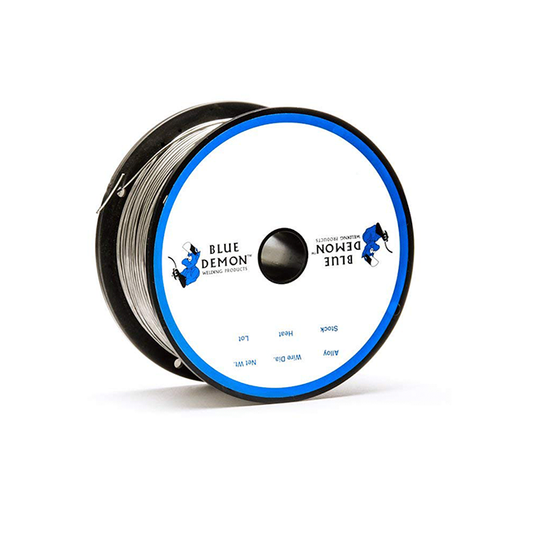Every welder wants to save time and money, but no one wants to compromise on the quality of a weld. Losing a client or job over a faulty weld is the last thing most welders want. Perhaps one of the best ways to save money and time on your welding projects is to consider the best applications for flux cored welding wire for MIG welding applications.
When it comes to MIG welding, welders typically need to use a shielding gas in order to protect the weld pool from contamination. Certain metals require different shielding gases. Steel uses CO2, but thin steel uses a mixture of 75% Argon / 25% CO2. Argon alone is used for aluminum.
In the case of flux cored welding wires, a shielding gas is not necessary since the flux inside of the wire produces a shielding gas when it melts in the weld pool. This can save on both time and overhead cost.
Here are some comparisons between solid wire and flux cored wire for MIG welding so that you’ll know when to use which one:
Solid Wire MIG Welding
The general rule for MIG welding is that the metal has to be cleaned completely with an angle grinder and sander so that no rust, paint, or other contaminants ruin the weld. The wire must be matched up to the material being welded—steel wire for welding steel materials, etc.
Solid wire MIG welding produces a clean weld by using a fairly simple “point and shoot” process compared to the other forms of welding. It’s ideal for automotive welding. Having said that, solid wire MIG welding doesn’t offer sufficient penetration into larger weld joints in order to be effective for thick metals. In fact, MIG is typically reserved for thin metals and for jobs where the appearance of the weld is most important.
A shielding gas is used with solid wire in order to protect the weld, and therefore, MIG welding with solid wire is not ideal for welding outside where wind can blow the gas away from the weld pool.
With all of these factors to consider, flux-cored welding wire provides some excellent alternatives to solid wire.
The Advantages of Flux Cored Wire for MIG Welding
Welders can choose between gas shielded and self shielded flux cored wire. Gas shielded flux cored wires require a shielding gas in order to protect the weld, they provide excellent weld joint penetration and make weld spatter and flux clean up quite simple. Gas shielded flux cored wires provide a good middle-ground between solid cored wires and self shielded flux cored wires.
Both kinds of flux cored welding wires can weld metal that is thicker and deposit more welding material (a higher deposition rate) than solid cored welding wire.
Self shielded flux cored wire is popular with many welders because it offers significant time savings and does not require a shielding gas. It can weld metals that aren’t completely clean and can achieve deeper penetration, especially for thicker metals.
Since it does not require a shielding gas, flux cored wire is particularly popular among farmers and welders who perform work outdoors where the wind can interfere with the shielding gas. Self-shielded flux cored wire performed well in horizontal, uphill, and overhead positions when tested by Welding Tips and Tricks.
While the wire itself will be more costly than a solid cored wire, the convenience of welding in multiple locations and positions without shielding gas or preparation make flux-cored wire a great choice. The main draw back to self-shielded flux cored wire is the amount of clean up required to remove the slag and spatter around the finished weld joint.



